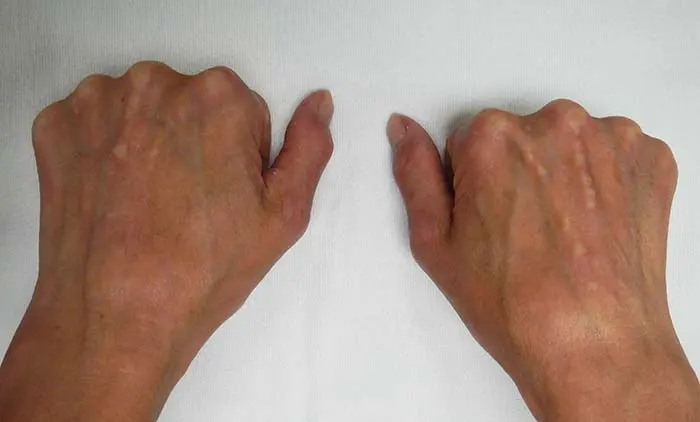Crest Syndrome
Skin Conditions
CREST is an acronym used to describe the symptoms of limited scleroderma, otherwise known as CREST syndrome – one of many dermatologic diseases with an autoimmune component. This means that a part of the immune system, which usually functions to protect the body from invaders such as bacteria, is attacking normal cells. In this case, antibodies are created which target human centromeres and topoisomerase 1. Once these antibodies bind their targets they set off a chain of events that is highly inflammatory. This inflammatory reaction is of the same type that causes fevers and, while it is very good at killing invaders, it is also very self-damaging. This chronic self-damaging inflammation is what results in CREST:
- Calcinosis – the skin of a patient with CREST syndrome will become thick, tight, and studded with calcium nodules.
- Raynaud’s phenomenon – the blood vessels in the fingers of a patient with crest syndrome will be overactive to stress and cold leading to episodes in which one or more fingers will appear bright white and feel numb to the touch.
- Esophageal dysmotility – the esophagus of a patient with CREST syndrome will lose its tone and become weak and atrophied, resulting in difficulty swallowing and issues with acid reflux.
- Sclerodactyly – patients with CREST syndrome may experience a dramatic thickening of the skin of the fingers that is even more severe that that caused by calcinosis alone. Initially the fingers will appear swollen and inflamed, but over time this chronic inflammation causes an overproduction of collagen making the digits tough and inflexible.
- Telangiectasia – patients with CREST syndrome may develop patches of dilated superficial capillaries that tangle together to create an appearance similar to a red spider web.
But what causes these antibodies to form in the first place? As of yet there is no clear-cut answer, but it is thought to be related to a combination of one’s genetic makeup and unknown environmental triggers. There is, unfortunately, no cure; therefore, symptoms are treated as they arise. However, advances in symptom management allow patients with this disease to live longer and healthier lives. For example: this form of scleroderma typically does not affect the kidneys, but when it does it used to be rapidly fatal. However, with the advent of a new class of drugs called ACE inhibitors, these exacerbations carry a much better prognosis. Proton pump inhibitors help combat acid reflux, and immunosuppressants can help downregulate the immune responses that are causing the disease. This and other forms of scleroderma are rare, but any new and persistent skin changes should be evaluated by a dermatologist so that autoimmune conditions such as CREST syndrome can be caught and managed early. Schedule an appointment with your dermatologist if you or your child is experiencing symptoms of Scleroderma/CREST.
Photo courtesy of James Heilman (Own work), via Wikimedia Commons

















